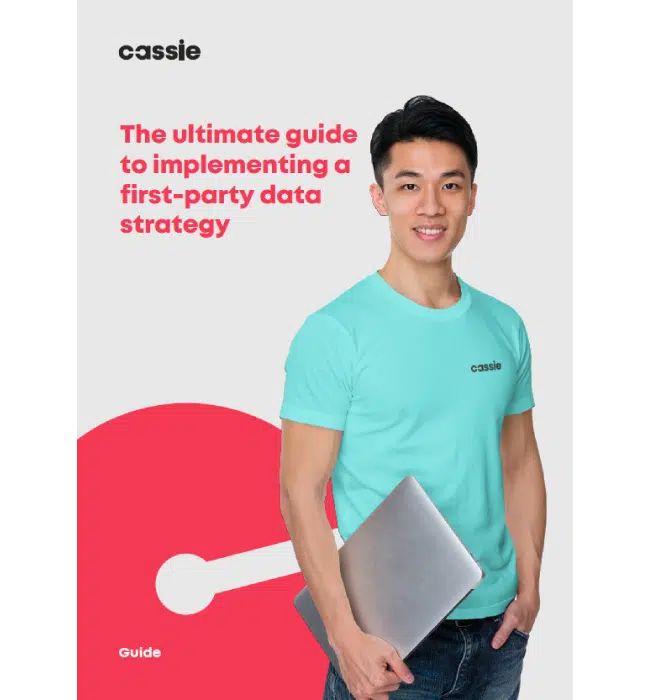7 proven tactics to maximize user consent and drive opt-in rates
Posted: June 29, 2023
The past few years have seen a marked shift in the way that companies collect and process data. As regulators around the world seek to protect user privacy, companies must find ways to comply with these regulations while still granting users control over their personal information. No longer is it merely enough to obtain consent from users – it has become a critical competitive advantage.
Companies must focus on understanding the user experience when it comes to data collection and processing, in order to anticipate consumer needs better and provide tailored services that meet those needs.
Businesses are under immense pressure to find ways to keep up with ever-rising consumer expectations, rapidly changing technology and the updated regulations that govern data privacy. As companies strive to increase their opt-in rates in order to personalize the user experience while still adhering to compliance standards, they are increasingly falling victim to consent fatigue and struggling to maintain revenue and personalization.
Innovative solutions have been created to help companies stay ahead of the curve that will allow businesses to build their opt-in strategies from the ground up. These solutions are designed to boost opt-in rates, deliver dynamic consumer journeys across multiple domains and devices, and ensure compliance with data privacy regulations.
Additionally, these solutions allow businesses to tailor opt-in strategies using data and analytics to maximize consumer engagement while still protecting user data.
7 ways you can maximize user consent and increase opt-in rates significantly
1. Make sure the consent request is clear and concise
Asking users for consent should be as simple and straightforward as possible. Don’t give them too much information at once, instead focus on describing what exactly you will do with their data in an easy-to-understand way.
2. Allow users to opt in or out of certain services
Giving users flexibility over what they give permission for can make it easier for them to trust your company and feel more comfortable providing access to their data. Allow them to pick and choose which services they would like to grant access to so that it feels more personalized.
3. Incentivize opting in
Offering incentives to users who give consent can provide powerful motivation for them to opt-in. These incentives could include discounts, free products or services, and access to exclusive content they wouldn’t otherwise be able to get.
4. Be transparent
When collecting data from customers, it is essential to be transparent and honest about what the data will be used for. You should ensure that your privacy policies are easily accessible and clearly explain how user data will be handled. Doing so builds trust between you and your customers, increasing the likelihood that they are willing to share their information with you.
5. Explain the benefits of consenting
Make sure users understand the value for them in opting in by telling them clearly what advantages they’ll gain from agreeing to provide their data.
6. Give users control over their data
Ensuring that users have total control over their data is important for creating trust and boosting opt-in rates. Make sure they know that you will not share their data with third parties without their knowledge and allow them to review or delete the information you have collected when they wish (i.e DSARs).
7. Offer an easy way to withdraw consent
Giving users the ability to revoke their permission for your company to access their data is essential. Doing so in a straightforward and speedy manner can make it much more convenient for them, leading to an increased likelihood of consent.
Opt-ins are a great way for marketers to get meaningful insights about their audience while also building trust
Opt-ins are essential to marketing teams as they provide valuable information and data that can be used for future campaigns and initiatives. They give marketers insight into customer preferences, interests, and purchasing behavior so they can target their messaging more effectively.
Opt-ins help to build relationships with customers by providing them with content and offers that are tailored specifically to their needs. By having an opt-in strategy, marketers can ensure that their message reaches the right people at the right time.
Ultimately, this leads to increased engagement rates which translate to higher conversion rates in the long run.
Want to enhance your marketing efforts and gain a competitive edge?
A first-party data strategy is essential for any business looking to improve their marketing efforts and gain a competitive edge. With the right approach, companies can use customer data to build more effective campaigns that target specific audiences and increase conversions.

The ultimate guide to implementing a first-party data strategy
Read our comprehensive free resource that covers the fundamentals of first-party data collection, data privacy considerations, tools and technologies, and step-by-step guidance for implementation.

